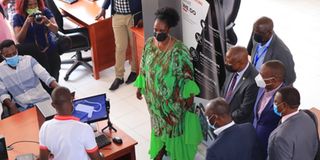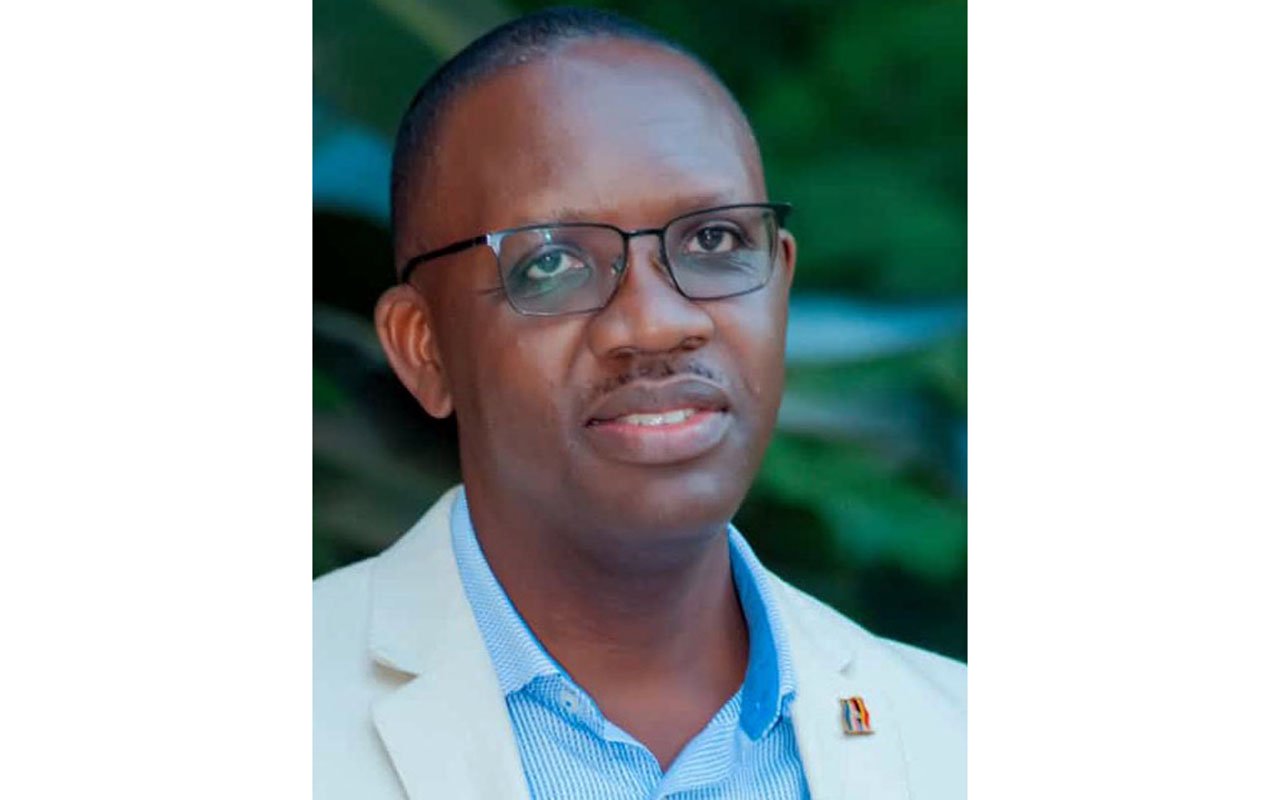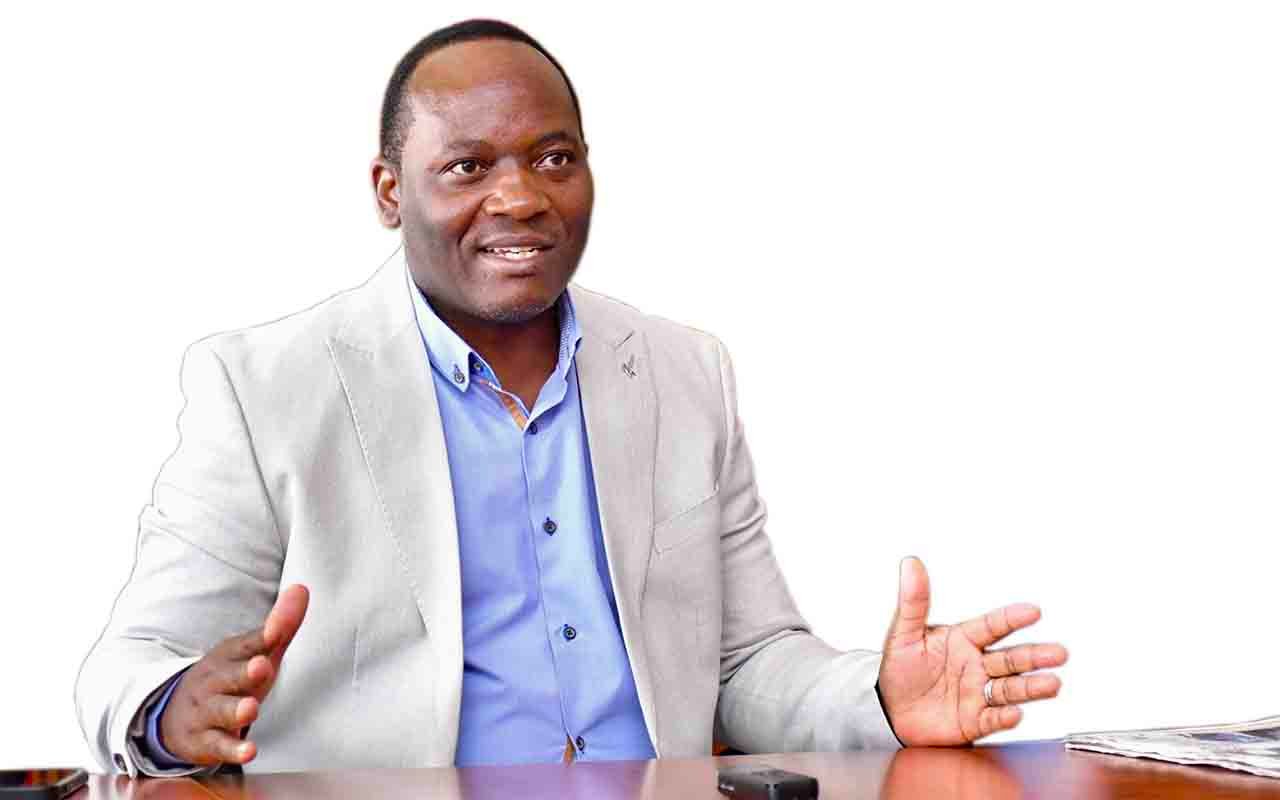Ugandans venture into stick computer manufacturing

Mr Ivan Karugaba (in white T- shirt), demonstrates to the ICT Ministry officials how the microfuse device works during at the National ICT Innovation Hub in Nakawa. PHOTO/PAUL MURUNGI
What you need to know:
The breakthrough for their product came at a time when the education sector had been grounded due to the Covid- 19.
Imagine all you needed for a computer was a memory stick with software that could be inserted into any smart screen.
This is not a dream but an idea that has been turned into reality by two Ugandan innovators; Mr Ivan Karugaba, a mechanical engineer, and Mr Elvis Ochieng, a computer engineer.
The two innovators have developed a miniaturised pocket-size computer, call it a microfuse stick which can replace the current computer systems unit.
The microfuse stick is similar to Google’s Chromecast, a streaming media adapter from Google that can be plugged into a TV’s HDMI port to allow users to play online content such as videos and music on digital television.
Just like a Chromecast, the microfuse device can be plugged into a smart TV, monitor, and projector for computer work or entertainment.
The difference is that the microfuse serves more purposes than the Chromecast, and it can be used as a computer, content streamer, and storage device.
Call it hitting two birds with one stone, your home TV set can serve as an entertainment unit, and also give you easy access to computing with the help of a pocket-friendly device.
The microfuse stick is designed with normal computing programmes such as Microsoft office set, browsers and supplemented with a remote, which acts as mouse for navigation, with the support of a keyboard.
Once the computer stick is inserted into the screen, it makes an automatic adjustment to the screen resolution according to your TV screen; be it a CRT, LCD or LED, or plugged to a monitor or projector. Mr Karugaba, the team lead, says the device serves many user cases. For instance, lecturers have the freedom to carry the device to lecture rooms and use it for conducting normal lectures by plugging it into the projector.
Alternatively, the device can be used for storage purposes with random access memory of 2 to 32 gigabytes.
The Microfuse multipurpose ability could give an edge to Mr Karugaba and his team to tap into the arts and creative industry where local content platforms could share their content with the mass market.
Mr Karugaba plans to lessen the cost burden where many Ugandans cannot afford the cost of normal computers.
“The microfuse stick goes for Shs 250,000, which can be a cost-cutting measure for someone who cannot afford a laptop of Shs 900,000 on the market,” he says.
The initial research process and product development for the microfuse stick started in early 2016 as a research project at Makerere University.
In the same year as the idea crystallised, Mr Karugaba left for Shenzen, China to make the first device prototype and also worked as a product developer at Shenzhen Ebyton Technologies.
On his return from China, Mr Karugaba and his team utilized the Uganda Industrial Research Institute (UIRI) premises to continue developing the product prototype. The prototype was then put to test with in-house product testing of five samples and use-case demos to focus groups such as students, lecturers and homesteads.
At the end of 2020, the team had made a breakthrough and decided to hit the market with a product launch with batch of 100 units that was meant to do market tests and the first pilot.
However, they realised that there was a possibility of someone else exploiting their innovation, and they decided to file for a utility model with Uganda Registration Services Bureau (URSB).
A utility model, according to URSB, is an exclusive right granted by the government for an innovation or invention, which is either a product or process that offers a new technical solution to a problem. The term of protection is 10 years.
The breakthrough for their product came at a time when the education sector had been grounded due to the Covid- 19 pandemic. To them, this was an opportunity to tap into home based learning using their innovation.
The team modified the microfuse device into a tablet to help students learn during the lockdown.
They first made a sample of some units for use by lecturers in delivering content for Makerere University College of Engineering at the department of mechanical engineering.
For now, the team has sold over 50 units to friends and family and other potential partners in government and private sector. Their next mass production targets 5,000 units for a bigger pilot in the education sector.
For now, final plans are being inked to build local manufacturing capacity such as localization of product components such as packaging casings and actual production.
“The long-term plan is to set up our plant and manufacture everything from here, and perhaps source just about 25 percent of other needed components from abroad like China and Germany,” Karugaba says.
The team’s biggest challenge has been funding, but over the years, they have created a bond with different government agencies such as the ICT Ministry and science and technology Ministry.
“We intend to be Africa’s largest manufacturer of consumer electronics,” Karugaba.




